A conversation with the Director of Talent Identification for US Soccer, Mirelle van Rijbroek The 2019 FIFA Women's World Cup has kicked off i
A conversation with the Director of Talent Identification for US Soccer, Mirelle van Rijbroek
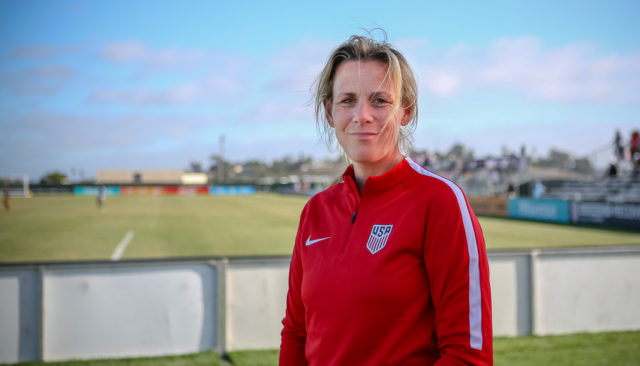
The 2019 FIFA Women’s World Cup has kicked off in France. Leading up to this Women’s World Cup, I asked van Rijbroek the hard question: Who does she think will win the championship? She answered, “Well, I hope we do, of course. But it’s going to be hard. I just don’t know. I think it’s going to be USA, England, France, Germany, or maybe the Netherlands, the reigning European Champions.”
The rest of the women’s soccer world is progressing quickly. What strengths do the Americans have on their side?
Looking at van Rijroek’s list, it’s clear that the rest of the women’s soccer world is progressing quickly. Especially Europe. I asked her what strengths the USA has that we can use to stay ahead.
“Americans never give up. It’s in America’s DNA. Americans are tough”
She explained that positive aspects of American sports culture: “I believe we have a great sports culture in the USA. Also, our players have great mindsets. They want to work hard. Americans never give up. It’s in America’s DNA. Americans are tough. They have the drive and belief that you can achieve anything as long as you work hard and never give up.”
“We can demand quality.”
She continued, in her matter-of-fact no-nonsense style, “We can demand quality. That’s where we can use the ‘pay-to-play’ American system to our advantage. In Europe, youth coaches are still mostly volunteers. or are on part-time contracts. Most coaches have full time regular jobs, especially in the women’s game. In the USA, coaches and clubs earn their money. It’s a full time job. Here in the USA, players pay a lot of money to train and play. Therefore we are obliged to deliver quality. Of course you have to know what quality is. That is one of the biggest challenges here.” (More about that in future articles…)
Developing youth players with international standards to remain dominant globally
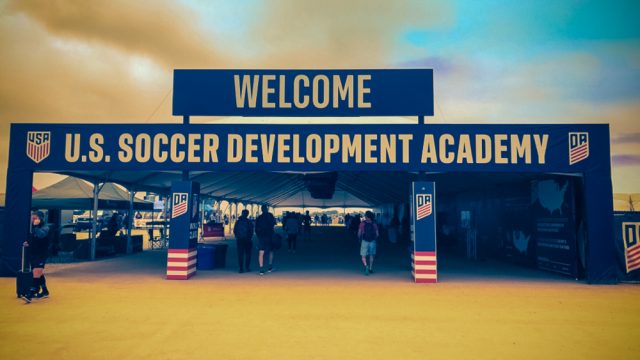
It is clear that van Rijbroek sees quality and strength in some American youth soccer environments, but not everywhere. She explained, “Some clubs have just become good at recruiting the best players but not in developing. On the other side, luckily, I have seen several clubs in the country who have a clear philosophy and methodology and do a good job in developing young players. Unfortunately this is not always recognized. Players and parents should become more aware of what is a good environment and what is quality. This is where America’s ‘pay to play’ system can be a weakness for American development.”
We will discuss this and many more issues in future articles (stay tuned!). For now, let’s get back to American strengths that we will surely see on display at this 2019 Women’s World Cup.
Every American player is on an NWSL team
You can learn more about every NWSL player on the USA roster in the “Fun Facts” series.
Van Rijbroek explained that one of the biggest strengths the USA has at the international/professional level is the NWSL (National Women’s Soccer League). “The NWSL is still one of the strongest leagues in the world. This has to do with the fact that the majority of NWSL players are able to focus full time on soccer and train every day. Also, top players from over the world play in the NWSL.”
Every player on the USA World Cup squad is on an NWSL team, playing alongside and against the best international players. This will definitely be an advantage that the USA carries into the group rounds of the Women’s World Cup and hopefully through the knock-out rounds to the championship.
World Cups are nothing new to the American women
Also, every US player at the Women’s World Cup, except for Christen Press, represented the USA on a US Youth National team. Every American player has extensive experience on the global stage. World Cups are nothing new to the American women. That experience will prove valuable in France over the next month.
Addressing our challenges
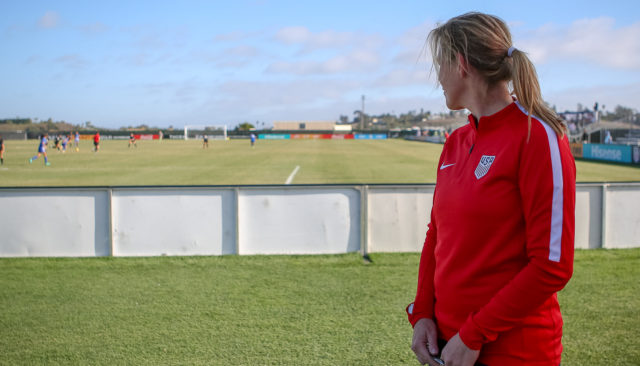
To remain internationally dominant on the women’s side, US Soccer must constantly evaluate and improve the youth development system. What are the challenges that need to be addressed?
“We do a lot of things that work tremendously, but we need to self-evaluate constantly and educate.”
What are the main weaknesses in the American youth soccer development system? Many coaches and American soccer experts enthusiastically point a damning finger at the “pay-to-play” system of American youth soccer. But van Rijbroek isn’t as quick to lay the blame for America’s lack of soccer dominance completely at the feet of our “pay-to-play” system. She explains “We do a lot of things that work tremendously, but we need to self-evaluate constantly and educate. Look at our system. Pay-to-play isn’t the biggest problem.”
“…our fragmented system here in the US is our biggest weakness.”
She continued, “Most other countries have their best 16 year-olds in professional year-round environments that develop their abilities. The environment we put our best youth players in is so important. It doesn’t have to be centralized, but high quality coaches have to be on board. The program and training have to be at a level that will develop those players. Some will mature earlier, and some later, of course. But eventually, the best players have to be training with and playing against the best players. That’s why our fragmented system here in the US is our biggest weakness.”
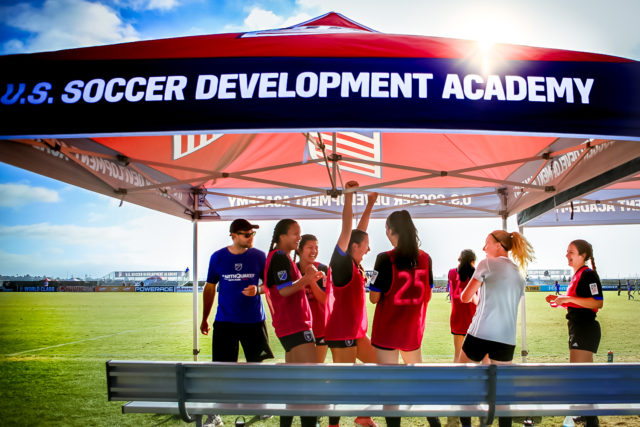
“Press’s journey can still happen, but it’s rare.”
Without saying so explicitly in this conversation, it’s clear that van Rijbroek thinks that the best US Youth players should not be in systems where they play high school soccer and have college soccer as the ultimate goal. Hence, her comment that the US system is counter-productive. I pointed out her that Christen Press wasn’t on the US Soccer radar until her college soccer career. She wasn’t part of a single US Youth National team system in her development years. Van Rijbroek replied, “Yes. Press’s journey can still happen today, but it’s rare. It’s an exemption and there will always be exemptions. The majority of our Women’s National Team roster has experience with the Youth National Teams.”
Past Performance Is No Guarantee Of Future Results
Van Rijbroek continued, “Soccer is a global sport. Americans must have an international perspective now that reflects what we’re doing with youth development and elite performance here. We need to have that global perspective and not just look at our past American dominance. The world is changing. What we did in the past will not be good enough for much longer.”
“We have gold in our hands, we just have to use it in the right way.”
“I do believe we have a tremendous potential as nation. We have gold in our hands, we just have to use it in the right way. Everyone in the American soccer system has this shared responsibility. American has to compete against the rest of the world. In the best interest of the development of the elite player, we all have to work to together instead of competing against each other.”
How does van Rijbroek respond to pushback?
US Soccer brought Mirelle van Rijbroek to America from the Netherlands because of her proven experience developing the youth system that resulted in the Netherland women becoming reigning European Champions. Many parents and coaches have resisted the Girls DA‘s emphasis on year-round development and the changes van Rijbroek says need to happen in American youth soccer systems, like in the comments HERE. I asked van Rijbroek how she responds to the pushback.
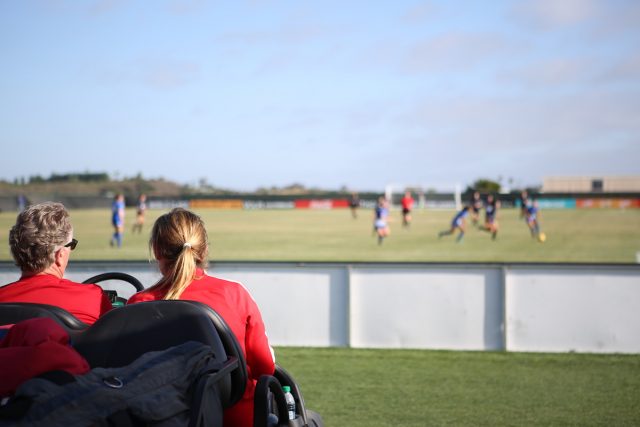
“I hear sometimes that people say, people to whom I have never spoken, ‘She is from Europe she doesn’t know our American system. Our system is so different from the European model.’ I can tell you my perspective is this: What is needed to become an elite player always needs to be based on what is required to deliver high performance at the international level. That should always be the starting point. Not a system or a league or college soccer. We constantly have to look within our landscape to recognize what works and what needs to be improved because we are competing globally now.”
“Coaches who have knowledge and experience at the international level tell the same story I do.”
“Also, I must say that I have a pretty good understanding of the American system. This is something I experience every day. I have done a lot of education on this and spoken with so many American coaches. Coaches who have experience at the international level tell the same story I do.”
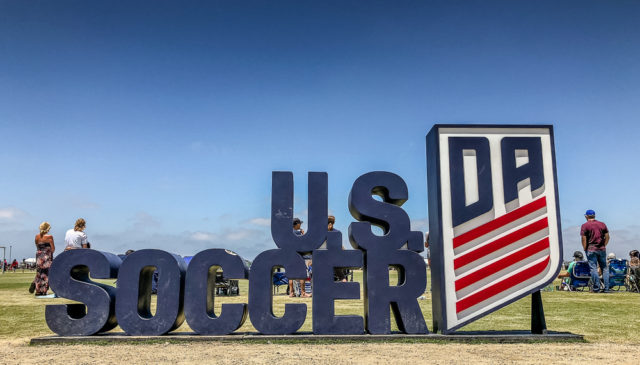
“Pay-to-play hurts us, but only a little bit…”
“Our fragmented system and our fractured landscape is one of our biggest problems. Our best players are all over the place. They are frequently being taught different languages which often contradict each other. It’s club, high school, college, personal trainers, parents, on and on. The rules are different in all of these different systems. We don’t have a coordinated talent development system. There are all these different platforms and leagues and all these different rules and standards. Pay-to-play hurts us, but only a little bit, and not as much as our fragmented system and fractured landscape do.”
Van Rijbroek has a lot to explain about youth development in America and how our challenges can be addressed. In future articles, we will go into deep detail about the challenges she sees. US Soccer is working hard to ensure youth development in America maintains international standards. Another priority of US Soccer is providing holistic and personal development for young American athletes. Van Rijbroek believes both can happen. The environment in which American youth play is paramount. What does that environment look like? What works, and what needs to change? What do parents, coaches, and clubs need to know? A lot, so stay tuned!
Stay tuned for much more about US Soccer Youth Development
But for now, with a hopeful eye to the future, we all excitedly watch to see how our American women do in France!
